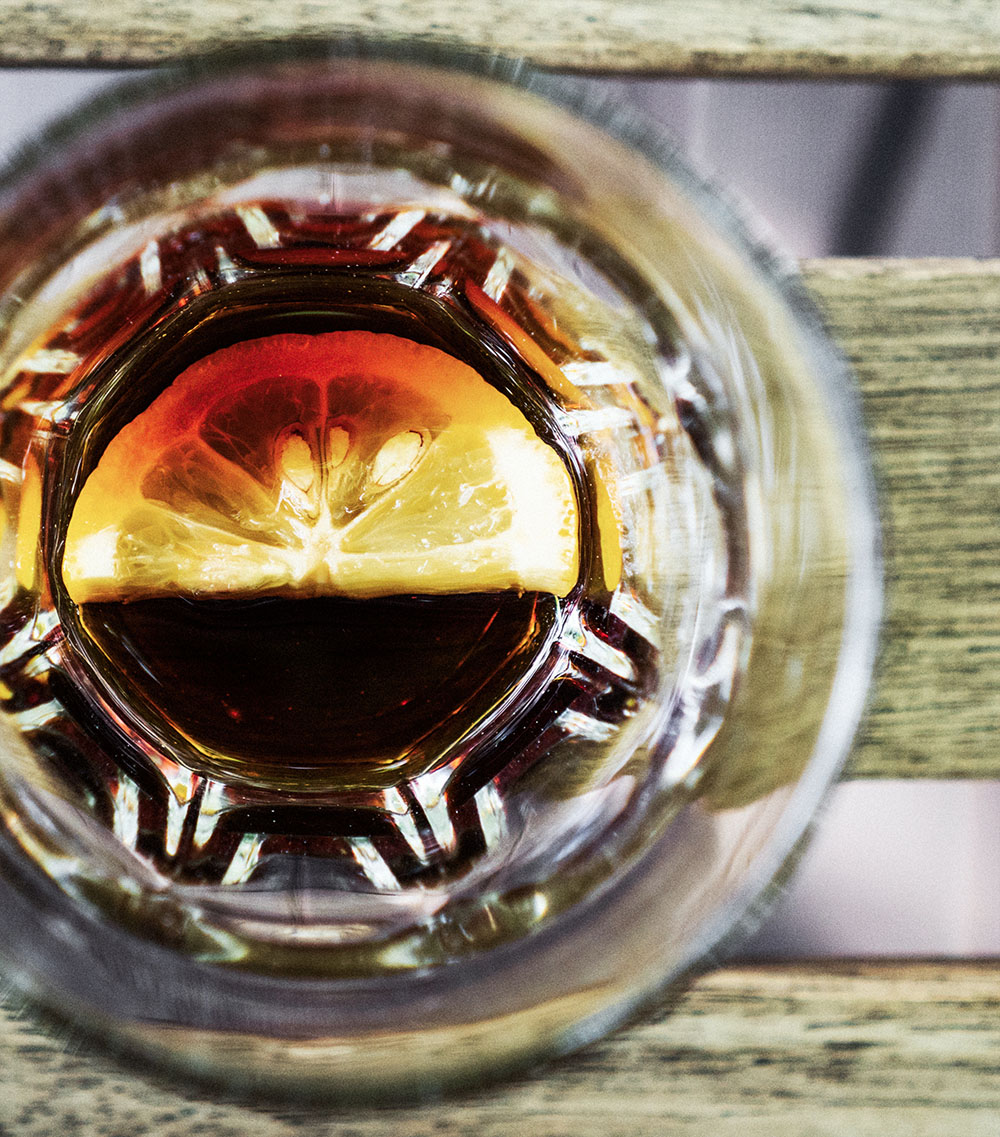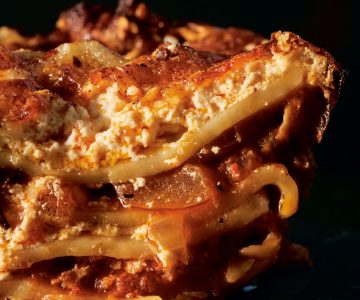
Right out of the gate when I started reviewing restaurants, I discovered there was a pattern to the process – something of a downside. I would head out for a meal in gleeful anticipation. And, as often as not, come home feeling somewhat worse for wear: not just replete but full beyond belief, with little more than the ability to compose a few notes before collapsing on my bed in a food coma.
At the time, these weren’t true “reviews” but more a genteel form of culinary prostitution. In return for what was always assumed would be a glowing, immensely positive write-up, we were required by the publisher to go a restaurant every week, cap in hand, begging for a free meal.
The ordeal started with (in those days) an obligatory cocktail before the meal – and went from there, as we were hosted and fêted to the kitchen’s best (but not always commendable) abilities. One or two dishes? No such luck, as the kitchen trotted out a string of plates. Even if you tried to order what you actually felt like eating, chances were that at least a couple of “Chef thought you should try this” dishes would arrive beforehand.
I soon realized that chefs and restaurateurs perceived me to be some kind of bionic diner. Eventually it took its toll, so much so that in later years I was only too happy to pay for my own meals and usually reviewed anonymously.
Thank goodness, not long after I started, almost by accident, I discovered stomach bitters.
In those days, a few decades before it was discovered by frat boys (and subsequently the BC Liquor Control and Licensing Branch), the most widely available was Jägermeister. That was back when the corner grocery store was ubiquitous – a lifeline open later than any supermarket. You could dig around in the back and find all kinds of late-night necessities, from Ovaltine to rice wine to condoms … and even stomach bitters.
I’m still not sure how I made the discovery but it wasn’t long before a bottle of Jägermeister took up permanent residence in my freezer. In my mind, its dark brown tincture was liquid salvation, a cure for (almost) anything that a restaurant could and did put in front of me.
By sheer luck, the drink that’s since become the college shooter of choice was my introduction to the wonderful world of bitters. For me, to this day, there’s nothing quite like the soothing, viscose promise of a good night’s sleep bestowed by a few post-prandial sips of Jägermeister – or of any number of other worthy (and more tasty) digestifs.
All kinds of reasons exist as to just why Jägy hit the big time. But the most likely is that its distinctly unusual personality played some kind of machismo role when consumed as a shooter … or as a series of shooters. Launched in 1935, the recipe of 56 secret ingredients doesn’t stray far from the classic style of stomach bitters that have been enjoyed or employed over many generations. I’ve never quite understood the allure that savvy marketers have capitalized on, with shooter wagons and their ilk now being commonplace on campus. For me, the welcome but curious taste of Jägy was very much based on necessity rather than actual enjoyment.
There was a time when we dined according to rules laid down and enforced by generations of stuffed shirts and equally well-starched maître d’s. Meals, especially French meals, followed a certain order, where to decline the post-meal list of digestifs would doubtlessly be greeted with a raised eyebrow. But, happily for the most part, times change.
Stricter drinking and driving regulations have also taken their toll on the civilized notion of the digestif. Not to mention the North American preoccupation with all things sweet. But while Europeans may consider themselves to have long been at the vanguard of the bitters tradition, almost every culture in history has developed its own coping mechanism for over-indulgence, some more successful than others.
It’s not known who discovered the true benefits of bitters, although evidence of bitter plants in the human diet can be found in ancient Greek and Egyptian cultures. The Egyptians appreciated the health benefits of Marrubium vulgare – more recently (and unfortunately) monikered as “horehound.” It’s a bitter green whose origins have even been traced through the Bible and which was often used to sooth sore throats and respiratory problems.
Angelica, which pops up in gin a fair bit, was also used as a cold remedy, while chamomile is a known sedative that is still widely enjoyed as a tea. Milk thistle, goldenseal, yarrow and more all have had their place and are making a comeback with organic and new-age consumers. And rue (or ruta), another once popular stomach aid, makes a brief appearance in Shakespeare’s Richard III. But, according to Pliny the elder, it was peppermint (Mentha piperita) that was one of the more popular and enduring foils for nausea and stomach aches. It still has its place in a somewhat medicinal sense as a principal ingredient in crème de menthe, arguably the most clinically inclined of digestives.

Even once notorious wormwood was a popular component in bitters recipes (until it was outlawed), causing no shortage of speculation as to what else might be included in those abundant “secret” concoctions. An oil extracted from artemisia and commonly used in absinthe, wormwood enjoys a somewhat unfortunate reputation, being so named because it was often prescribed to kill intestinal worms.
The rise in cocktail culture is breathing new life into many of these once popular liqueurs as a new generation of bartenders is keen to discover new flavours and push taste boundaries. Even home production of cocktail bitters has taken hold, signalling a definite shift towards a more sophisticated and receptive palate.
The best example of this trend is the rise in popularity of Fernet-Branca. Long widely enjoyed by the Argentines (who particularly relish it when cut with two parts Coca Cola) a Fernet craze has started to take hold in North America.
The Italians classify more than 50 bitter-infused liqueurs as amari, most of which are based on grape brandy before being sweetened and aged. The result is often a complex and layered drop, such as Amaro Montenegro or Amaro Nonino.
If the Italians might appear to have the lock on bitters, the French have plenty to cheer about in the realm of digestifs, even laying claim to the widely used term itself. While there’s no shortage of herbal and suitably amer concoctions, in my mind few after drinks are as satisfying and settling as Calvados. I’m not sure where I developed my weakness for such a luxurious drop, although I’m almost certain it involved someone of French descent and a restaurant.
Calvados is eau de vie at its best, and the more superior ones are the best in terms of digestifs. Plus, I love the history, which stems from the resurrection of the cider industry in Normandy when wines and vines had fallen on hard times.
What’s in my freezer these days depends more on where I’ve just been and what’s available. But here’s what you might find.
Amaro Montenegro ($36)
An Italian variation on brandy, infused with a variety of herbs and spices, sometimes orange peel and more. Perfect as an after-dinner drink, it lives up to its amaro (“bitter”) handle thanks to a secret blend of more than 40 herbs that’s been made in Bologna since the late 1800s. Perfumed with marmalade notes, orange and honey on a smooth and viscose palate with a subtle bitter end that makes for a perfect, complex and layered digestif.
Becherovka ($29)
Long established and made since 1794, but now Pernod Ricard¬–owned, Czech bitters, also produced from a secret combination of herbs and spices. Yields hints of cinnamon and ginger through a herbal-edged but clean and refreshing palate. Enjoyed chilled, usually neat but sometimes with tonic water in a national drink known as “Beton.”
Calvados Roger Groult ($87)
Made in the Pays d’Auge (in the heart of Normandy’s AOC Calvados and cider country), in the classic, traditional manner: wood fired, double distilled, aged in giant oak casks and prepared from a selection of some 30 different estate-grown apples. Founded in 1860, a true pioneer of Calvados, Groult is widely regarded as among the best on the market.
Fernet-Branca ($27.49/500 ml)
Yet another secret formula, the increasingly popular Italian bitters draws on 27 herbs sourced from around the world (including aloe from South Africa and gentian from France). Oak aged for a year or more to produce a dark, citrus-edged and distinctly menthol-toned bitter end. Currently in vogue with post-shift bartenders and palate-weary wine writers.
Jägermeister ($30)
Arguably the most widely available bitters on the market, thanks to its cult status as a shooter, this dark brown elixir (to some) combines elements of classic bitters and liqueur, drawn from myriad herbs and roots (56 in all). Oak aged for a year for a liquorice and dark spice–toned drop. Contrary to popular rumour, it does not contain a trace of elk blood.












